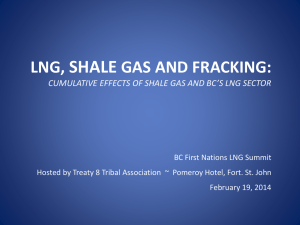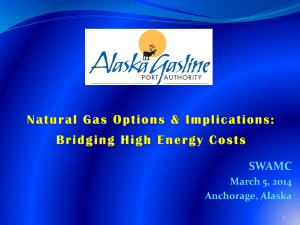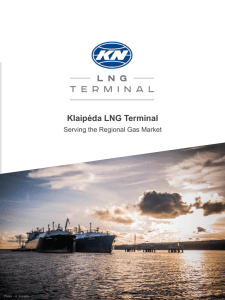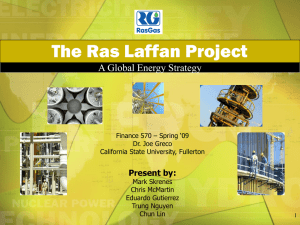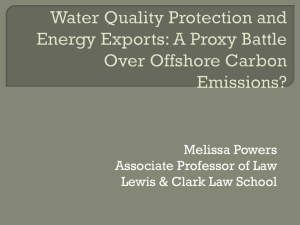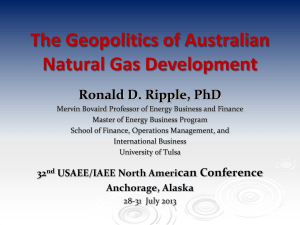COSTA - Associação dos Portos de Portugal
advertisement
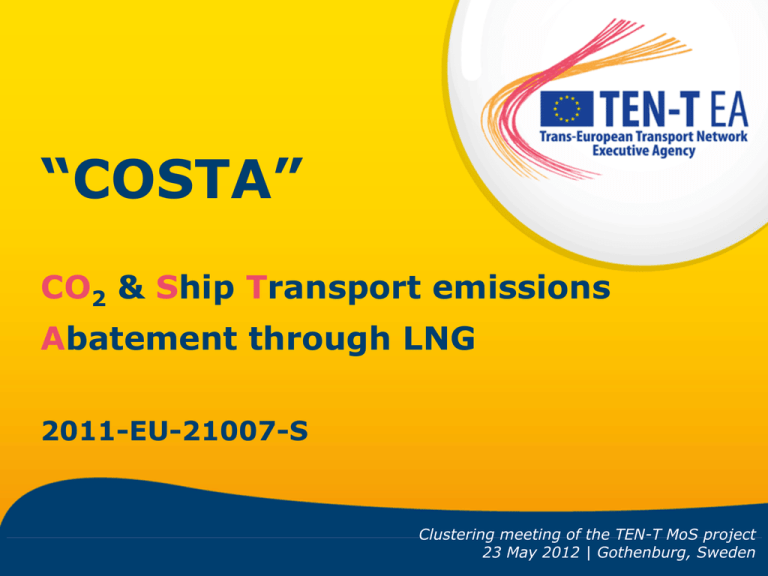
“COSTA” CO2 & Ship Transport emissions Abatement through LNG 2011-EU-21007-S Clustering meeting of the TEN-T MoS project 23 May 2012 | Gothenburg, Sweden CO2 & Ship Transport emissions Abatement through LNG ● “COSTA” project 2011-EU-21007-S ● Supported by the European Commission - Trans-European Transport Network Executive Agency TEN-T EA ● Initial partners: Italy, Spain, Portugal and Greece ● Total project cost : around € 3 million, 50% supported ● Time frame: 2012– 2014 “COSTA” CO2 & Ship Transport emissions Abatement through LNG 2011-EU-21007-S Main Objectives (1) ● The COSTA Action objective is the development of framework conditions for the use of LNG for ships in the Mediterranean, Atlantic Ocean and Black Sea areas. ● It will result in preparing an LNG Master Plan for short sea shipping between the Mediterranean Sea and North Atlantic Ocean as well as the Deep Sea cruising in the North Atlantic Ocean towards the Azores and the Madeira Islands. ● The feasibility study will promote Motorways of the Sea sustainability, contributing to the common effort addressing climate change, in particular in view of the forthcoming requirements with respect to the implementation of the requirements of Annex VI of the MARPOL Convention. ● Furthermore the Action will contribute the use of new technologies and systems to increase MoS efficiency and effectiveness. “COSTA” CO2 & Ship Transport emissions Abatement through LNG 2011-EU-21007-S Main Objectives (2) ● The project will complement the results of the on-going LNG North Sea and Baltic Sea project 2010-EU-21112-S. ● This will increase the potential of Motorways of the Sea by decreasing transport costs and reducing CO2, NOx and SOx emissions and using of LNG as an alternative to marine bunker. ● If COSTA’s policy recommendations are implemented it is expected that CO2 emissions from shipping could drop by 25% in 2020 and by 50% in 2050. ● For the air pollutants the use of LNG would eliminate SOx and reduce NOx by 90%. “COSTA” CO2 & Ship Transport emissions Abatement through LNG 2011-EU-21007-S COSTA Action and the LNG North Sea and Baltic project ● The project will take into account the following particularities between the COSTA action and the LNG North Sea and Baltic project: in the Baltic area (and in other SECA/ SOx Emission Control Areas) use of fuel with maximum 0.1% sulphur contents will be compulsory from 2015; this makes LNG an economically viable alternative in the short term. In the rest of the world the sulphur limit is planned to be lowered to 0.5% in 2020; in the Baltic area, most of the traffic by sea is based on regular service on short routes; this means that relatively small LNG refuelling facilities are necessary. On the contrary in the Mediterranean Sea most of the traffic is of the “long range” type, moreover third Countries (e.g. North Africa) play an important role, hence securing LNG supply in the area with a convenient network of suitable LNG refuelling facilities is a must. “COSTA” CO2 & Ship Transport emissions Abatement through LNG 2011-EU-21007-S LNG Master Plan (1) ● The LNG Master Plan will therefore clearly identify what is necessary to be done, when it is to be done, by whom and which are the necessary investments in order to be able to use LNG as fuel for shipping in the Mediterranean, Black Sea and Atlantic Ocean basins, including the seariver connections and deep sea cruising in the North Atlantic Ocean, from 2020 onwards. “COSTA” CO2 & Ship Transport emissions Abatement through LNG 2011-EU-21007-S LNG Security of supply “COSTA” CO2 & Ship Transport emissions Abatement through LNG 2011-EU-21007-S LNG Security of supply “COSTA” CO2 & Ship Transport emissions Abatement through LNG 2011-EU-21007-S LNG Master Plan (2) ● Advantage will be taken from the achievements of the LNG North Sea and Baltic project in particular on safety issues as well as on technical issues. More specifically, two scenarios will be analyzed: medium term (2020), considering a sulphur limit of 0.5% with a sensitivity analysis on a limit of 0.1%; long term (2030), considering a sulphur limit of 0.1%. “COSTA” CO2 & Ship Transport emissions Abatement through LNG 2011-EU-21007-S LNG Master Plan (3) ● The specific objectives of the project are the following: to identify, for medium (2020) and long-term (2030) scenarios, the obstacles (technical, logistic/social and sustainability) which prevent/limit the use of LNG for shipping in the above areas; to work out solutions and recommendation which enable LNG to be an option in each of the two scenarios considered; to draw the LNG Master Plan respectively for each of the analysed scenarios. “COSTA” CO2 & Ship Transport emissions Abatement through LNG 2011-EU-21007-S Activities Activity 1 - LNG Master Plan Sub-Activity 1.1: LNG bunkering scenarios (to identify the obstacles technical, logistic/social and sustainability which prevent/limit the use of LNG for shipping) Sub-Activity 1.2: LNG Solutions (special mention to detailed technical studies addressing ship retrofitting and typical port facility/infrastructures) Sub-activity 1.3: LNG Master Plan (strategic document composed of a technical and a policy sections for Mediterranean, Atlantic and Black Sea) Activity 2 - Stakeholders, Experts and Dissemination Sub-Activity 2.1: COSTA Stakeholders Sub-Activity 2.2: Dissemination Activity 3 - Coordination & Management Technical coordination and administrative management. “COSTA” CO2 & Ship Transport emissions Abatement through LNG 2011-EU-21007-S For Portugal “COSTA” is a win-win project ● On one hand, conscious of the environmental and energy efficiency requirements, particularly in the maritime transport sector, COSTA has a strong strategic nature, both at European and national levels, by reinforcing the integration of Madeira and Azores within the space of European Union and, not less important, by demonstrating the enormous advantage of the position of those two North Atlantic territories within the supply chain of LNG as marine fuel. ● On the other hand, Madeira and Azores may obtain significant economic benefits from their recognition as environmentally sustainable touristic areas and also from the increase of the traffic of regular lines of LNGpowered vessels, such as ferries and cruise segment and simultaneously their population and tourists may directly benefit from the reduction of the emission of greenhouse gases. “COSTA” CO2 & Ship Transport emissions Abatement through LNG 2011-EU-21007-S “COSTA” CO2 & Ship Transport emissions Abatement through LNG 2011-EU-21007-S Thank You Clustering meeting of the TEN-T MoS project 23 May 2012 | Gothenburg, Sweden

